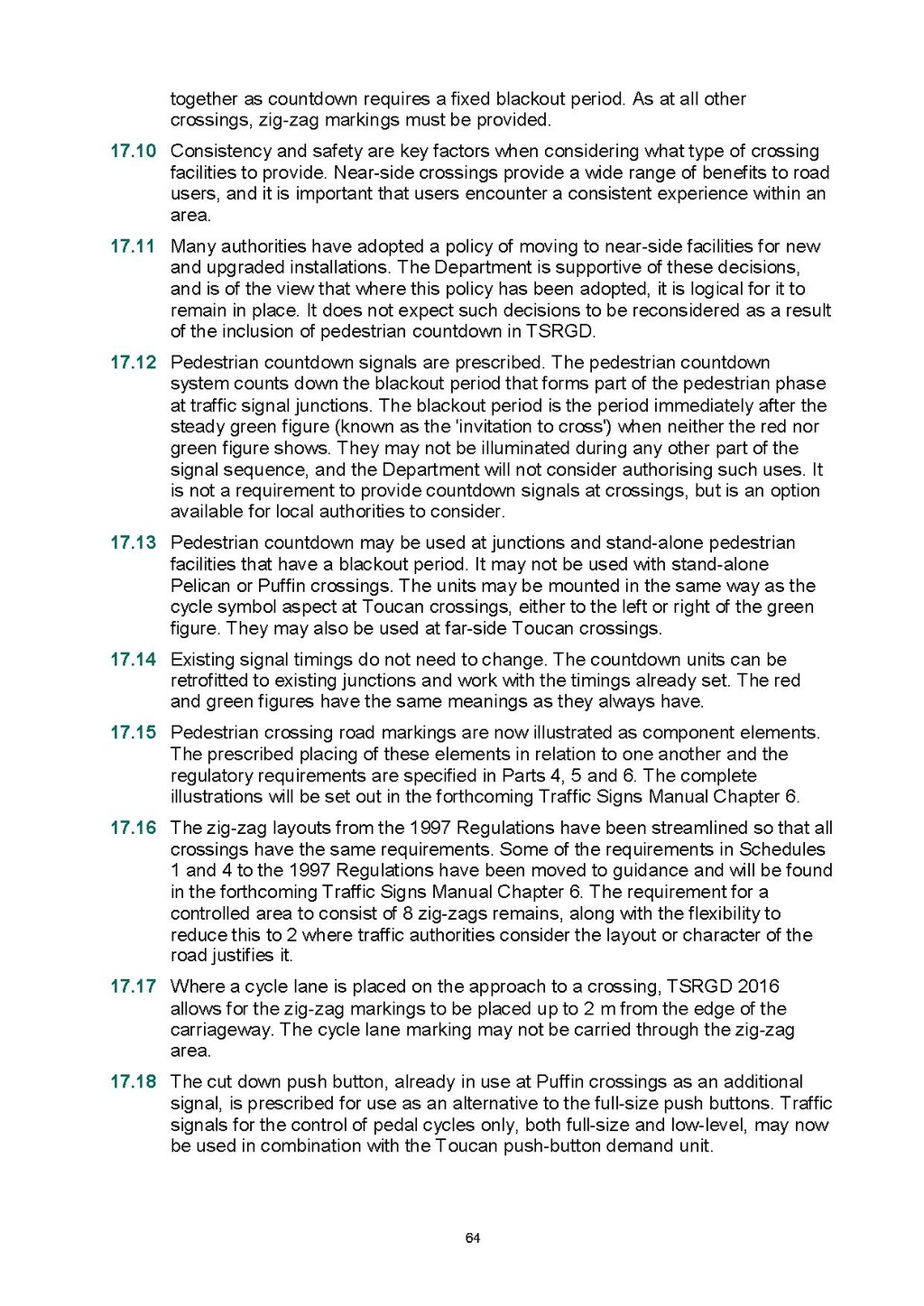together as countdown requires a fixed blackout period. As at all other crossings, zig-zag markings must be provided.
17.10
Consistency and safety are key factors when considering what type of crossing facilities to provide. Near-side crossings provide a wide range of benefits to road users, and it is important that users encounter a consistent experience within an area.
17.11
Many authorities have adopted a policy of moving to near-side facilities for new and upgraded installations. The Department is supportive of these decisions, and is of the view that where this policy has been adopted, it is logical for it to remain in place. It does not expect such decisions to be reconsidered as a result of the inclusion of pedestrian countdown in TSRGD.
17.12
Pedestrian countdown signals are prescribed. The pedestrian countdown system counts down the blackout period that forms part of the pedestrian phase at traffic signal junctions. The blackout period is the period immediately after the steady green figure (known as the 'invitation to cross') when neither the red nor green figure shows. They may not be illuminated during any other part of the signal sequence, and the Department will not consider authorising such uses. It is not a requirement to provide countdown signals at crossings, but is an option available for local authorities to consider.
17.13
Pedestrian countdown may be used at junctions and stand-alone pedestrian facilities that have a blackout period. It may not be used with stand-alone Pelican or Puffin crossings. The units may be mounted in the same way as the cycle symbol aspect at Toucan crossings, either to the left or right of the green figure. They may also be used at far-side Toucan crossings.
17.14
Existing signal timings do not need to change. The countdown units can be retrofitted to existing junctions and work with the timings already set. The red and green figures have the same meanings as they always have.
17.15
Pedestrian crossing road markings are now illustrated as component elements. The prescribed placing of these elements in relation to one another and the regulatory requirements are specified in Parts 4, 5 and 6. The complete illustrations will be set out in the forthcoming Traffic Signs Manual Chapter 6.
17.16
The zig-zag layouts from the 1997 Regulations have been streamlined so that all crossings have the same requirements. Some of the requirements in Schedules 1 and 4 to the 1997 Regulations have been moved to guidance and will be found in the forthcoming Traffic Signs Manual Chapter 6. The requirement for a controlled area to consist of 8 zig-zags remains, along with the flexibility to reduce this to 2 where traffic authorities consider the layout or character of the road justifies it.
17.17
Where a cycle lane is placed on the approach to a crossing, TSRGD 2016 allows for the zig-zag markings to be placed up to 2 m from the edge of the carriageway. The cycle lane marking may not be carried through the zig-zag area.
17.18
The cut down push button, already in use at Puffin crossings as an additional signal, is prescribed for use as an alternative to the full-size push buttons. Traffic signals for the control of pedal cycles only, both full-size and low-level, may now be used in combination with the Toucan push-button demand unit.
64
